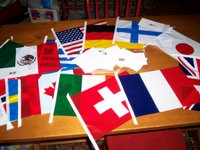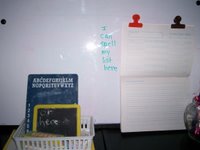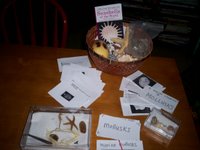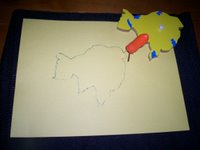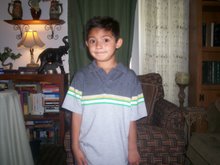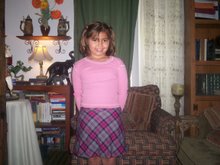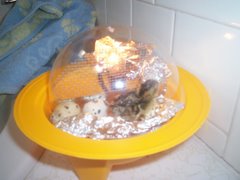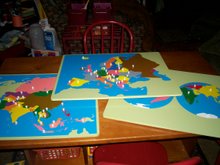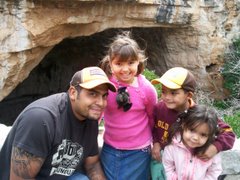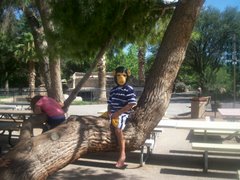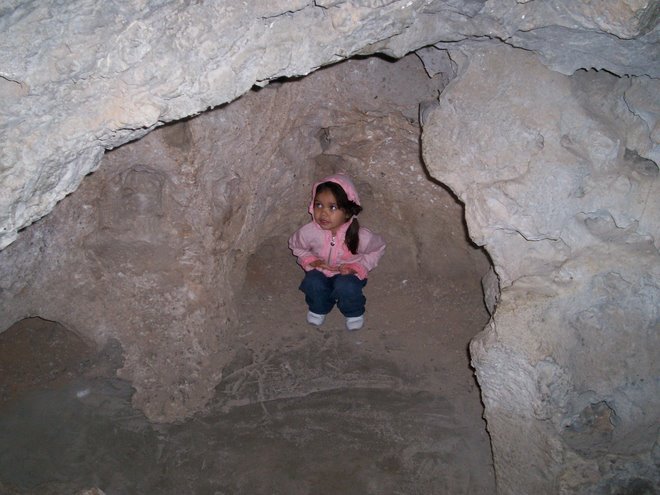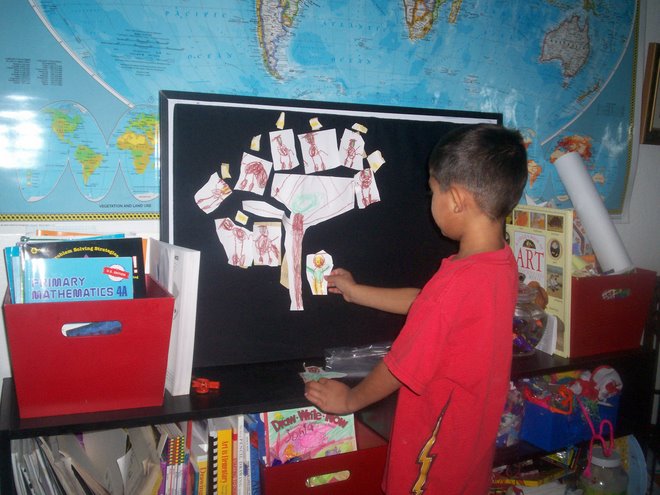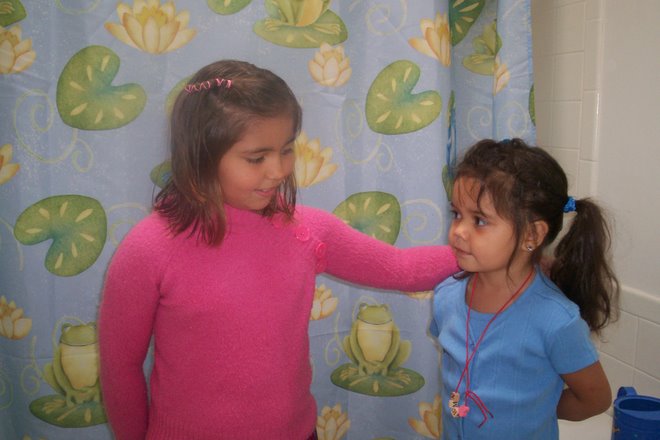Dodo-- 3rd Grade
Our main focuses this year will be Math, Latin, and Spelling.
Reading/Writing/Language Arts are her trump card, and I don't really have to do too much in that department, since she already voraciously reads and comprehends at an late middle school/ early highschool level.
Math is also a strong suit, but I do have to work to give her daily practice and keep her on track and challenged.
Latin is her latest passion, she finished the first 1/3 of Rosetta Stone Latin last year, some of Learning Latin through Mythology and then devoured the Prima Latina in 3 weeks this summer, and she has it all down pat. We've already started (and are enjoying) the LfC.
Spelling is her weakest subject, we did it very casually last year but I decided she needed something more. I chose Spelling Power, hopefully it will do the trick.
Math (daily 30-60 minutes)
*Mastering Mathematics: Finishing Fractions
*Mastering Mathematics: Perfecting the Point
Key to Measurement & Key to Metric System series
Finish Challenge Math Primary
Get a Grip workstation (TOPS)
Hands on Equations
Exploring Geometry and Fractions with Tangrams
Occasional timer test reviews and fact games
No Problem! (problem solving course from Prufrock)
*Saxon 7/6 (if she finishes MM. She already tested into it but I prefer the MM approach first and then the Saxon as a review/test prep)
Social Studies (4x a week, 1 hour)
*Story of the World 2:Middle Ages with AG and (too numerous to list here) supplementary books and kits recommended for the grammar and logic stages, Kingfisher and Usborne History Encyclopedias, some timeline work
Review States/Capitals and US geography periodically
Audio Memory: World Geography w/workbook
Foriegn Languages (5x per week, 30-60 minutes)
*Latin for Children Primer A &B w/DVDs, Activity Book and History Reader
Latina Christiana 1, Activity Book, Book of Roots
the 2nd 1/3 of Rosetta Stone Latin
Hey Andrew! Teach me some Greek Primer & workbook 1
Learning Latin Through Mythology
Language Arts (5x week, 30-90 minutes not including reading)*Rod and Staff Grammar 4 (mostly oral except diagramming)
*Writing Lab (from Prufrock)
last 1/2 of Writing Strands 3
Writing Like Writers (once in a while)
Writing Blaster /independent free writing
Poetry a'la Carte (Prufrock)
*Spelling Power (Daily)
Descriptive Mysteries
Handwriting Without Tears Cursive Success (4x per week, 10 minutes)
Sciences (4x per week, 30-90 minutes)
*my homemade "Prehistory" cosmic Curriculum
Story of Science 2: Newton at the Center
Biographies of medieval/renaissance scientists and mathematicians
Literature (daily 2-3 hours)
modern literature family study in evenings
medieval literature (continued concentration on world mythology and fairy/folk tales)
daily free reading (at least 1 hour)
Classic & Modern Poetry
Memory Work (daily 15-20 minutes)
poetry selections from the Poetry for Young People Series (Poe, Stevenson, Tennyson, Lear, Carroll, Animals, Seasons)
and subject-related work (Latin, Science, History, Geography)
Religion (TBD)
Story of Religion
Children's Story Bible
KJV Bible
Tankh
My Friends' Beliefs
Buddhist/Hindu stories
Arts & Music (art-- 1x per week, 30-90 minutes, music--daily, 15 minutes)
*Artistic Persuits
Phonics for Piano , misc piano books and music
Child-sized Masterpieces
Drawing With Children
Misc. (TBD)
SpongeBob Typing 2007
Logical Journey of Zoombinis
Mindbenders A3 and A4
Analogies B series software
Dr Funster's Thinkaminutes
Fritz and Chesster 2
assorted enrichment books from Prufrock in all subjects
So we are basically looking at a flexible 4-5 hour day, 8-12, and sometimes an hour or so in the afternoon, which is pretty much the same as we followed this past year. Afternoons are for park days, nature study, hiking, shopping, field trips, swim lessons, gymnastics, library, sand/water table, trampoline, educational videos, self-directed activities, more reading, games, and other big family projects.
Scote's 1st Grade master plan still to come.
~EH
